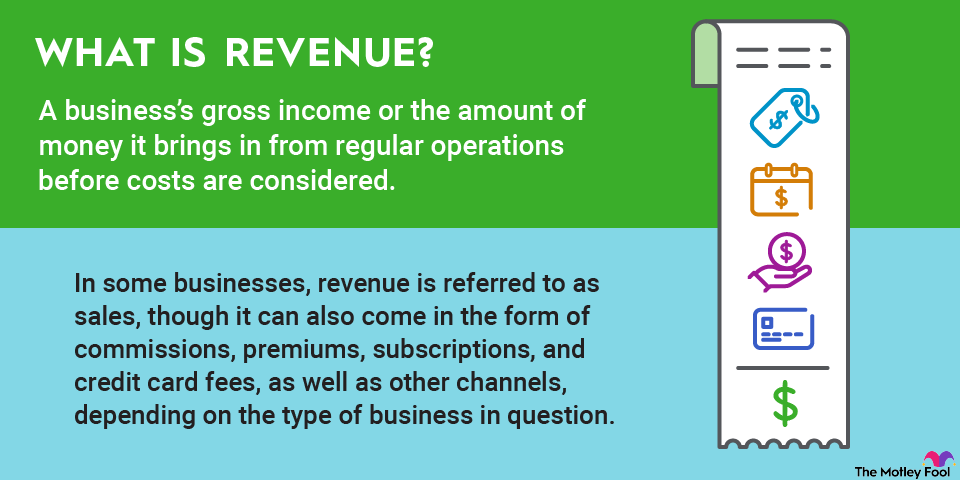Revenue is many things. Commonly known as sales, it’s the top line of the income statement as well as a key financial metric that investors use to measure the financial health of a business. Like any financial metric, there are also rules underpinning the way it’s measured and recorded, and investors should be familiar with these revenue recognition principles.

What is revenue?
Put simply, revenue is a business’s gross income or the amount of money it brings in from regular operations before costs are considered. In some businesses, revenue is referred to as sales, though it can also come in the form of commissions, premiums, subscriptions, and credit card fees, as well as other channels, depending on the type of business in question.
Revenue is often used as one way of measuring the size of a business, and investors tend to look at revenue growth as a reflection of a business’s growth rate. Along with profits, or net income, revenue is generally one of the two most important metrics that investors look at in the income statement.
Understanding revenue
Revenue might seem like a simple concept, but the way it’s recorded isn’t always straightforward, and how it’s recorded often depends on the type of business.
For some businesses, like retail, revenue is typically recorded when a sale is made, but for other businesses, like software, it’s more complicated. In accrual accounting, the basis for an income statement, revenue is recorded when a service is provided, not when it’s paid for. So the timing of revenue recognition can differ significantly from the timing of cash collection, depending on the type of business and how customers pay their bills. In contract-based businesses like software, customers may pay up front for some products or pay after the services have been provided.
Accrual accounting is designed to smooth out the lumps that are common in cash-based accounting, making revenue a useful indicator of how a business is performing. However, it’s a good idea to keep an eye on cash flow to make sure that revenue is being converted into cash.
Cash Flow
How to use revenue
Revenue is a valuable tool for investors, and there are a number of ways it plays into financial analysis. One common usage is in the price-to-sales ratio, which values a stock based on how the share price compares to revenue per share.
For profitable companies, investors typically prefer to use the price-to-earnings ratio, but the price-to-sales ratio can help complete the valuation picture since profit margins can vary from quarter to quarter, and profit growth relies on revenue growth. For companies in sectors like software that may not have profits, the price-to-sales ratio is especially valuable since it shows how expensive the stocks are and how they compare to others.
Revenue growth is also a key metric for investors. In general, revenue growth is the best metric to use to assess a company’s growth rate and potential. Although revenue has to ultimately translate into profits, a stock’s value is closely tied to its top-line growth rate since that offers an indication of the demand for a company’s products and its potential for expansion.
Related investing topics
How revenue is calculated
At its most basic level, revenue is calculated as price multiplied by the quantity sold. If a restaurant sold 20 hamburgers for $10, its revenue would be $200.
For most companies, which have multiple product lines and different businesses, calculating revenue is more complex, and the underlying concept is straightforward. Revenue is money that comes in from normal business operations. That’s separate from one-time gains like stock sales, legal proceeds, or interest income for non-financial companies.
Understanding revenue is a valuable tool for any investor, especially as we look forward to the next bull market. Knowing the different ways that businesses recognize revenue is helpful for analyzing individual sectors. Comparing the cash flow statement with revenue is also important to make sure businesses are converting their revenue into cash.
Finally, looking at metrics like the price-to-sales ratio and revenue growth can help guide your investments; both of those key metrics start with revenue.


















